Korean fish cakes, known as eomuk or odeng, are a beloved staple in Korean cuisine, made from a mix of ground white fish, shrimp, and potato starch, along with other ingredients.
These savory snacks are incredibly versatile and are commonly used in stir-fries, soups, and even kimbap. Cherished in households across Korea, they are celebrated for their delightful taste and adaptability.
In Korea, eomuk is commonly found at street food stalls, often served on skewers in a warm broth, a tradition that stems from Japanese influence during the early 20th century. Despite their simple appearance, these fish cakes are packed with flavor and boast a chewy texture that is quite satisfying.
Cooking with Korean fish cakes is easy and quick, making them perfect for busy weeknights. You can try them in a spicy stir-fry with vegetables or in a comforting bowl of soup for a taste of traditional Korean home cooking.
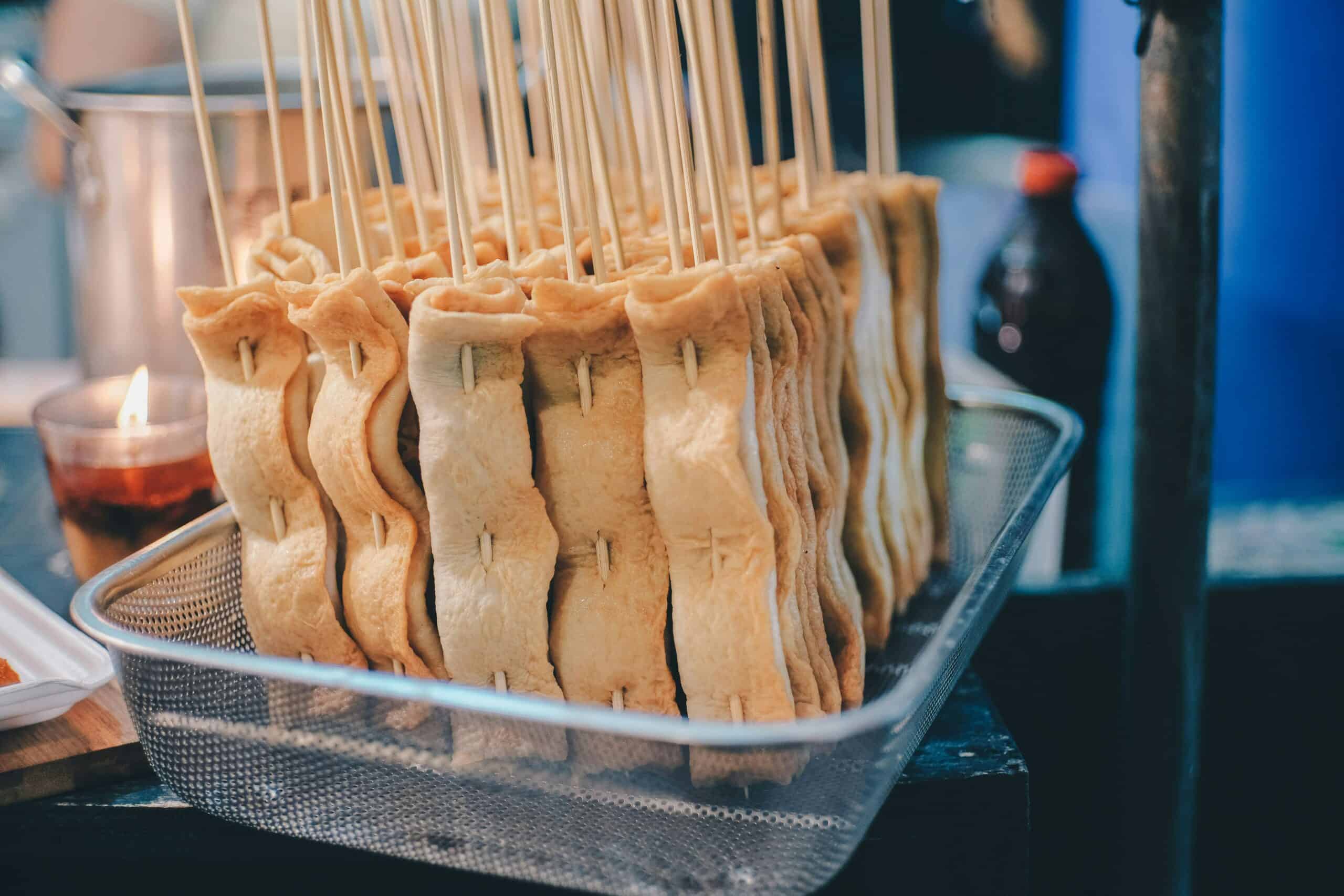
Jump to:
📜 Historical Background
Origin and Evolution
Korean fish cakes, known as odeng, originate from Japan, where the term comes from the Japanese stew called oden. During Japan's colonization of Korea from 1910 to 1945, many Japanese culinary practices, including odeng, were introduced to Korea.
Initially, fish cakes were simple foods made by grinding fish and forming them into various shapes.
Over time, Koreans adapted the dish and began calling it eomuk. Unlike the original Japanese version, Korean fish cakes often include additional ingredients like shrimp, potato starch, wheat flour, and vegetables, reflecting Korea’s local tastes and ingredients.
Today, fish cakes can be found in various forms across Korea, from skewers served in broth to ingredients in popular dishes like kimbap and soups.
Popularization and Varieties
Fish cakes are a staple street food in Korea, commonly sold by vendors at markets and street corners. These vendors offer steaming skewers of fish cakes soaked in hot broth, providing an affordable and tasty snack for busy people on the go.
There are many varieties of fish cakes in Korea, ranging from crispy and deep-fried to soft and simmered. Some are enhanced with added spices and flavors, while others remain plain.
Unique versions of these fish cakes can be found across different regions, showcasing local preferences and culinary creativity. Each region adds a distinct touch to this popular snack, reflecting the diverse tastes and traditions of Korean cuisine.
Fish cakes have also found their way into home cooking. They’re used in stir-fries, soups, and even lunch boxes. As a versatile ingredient, fish cakes are cherished in Korean cuisine.
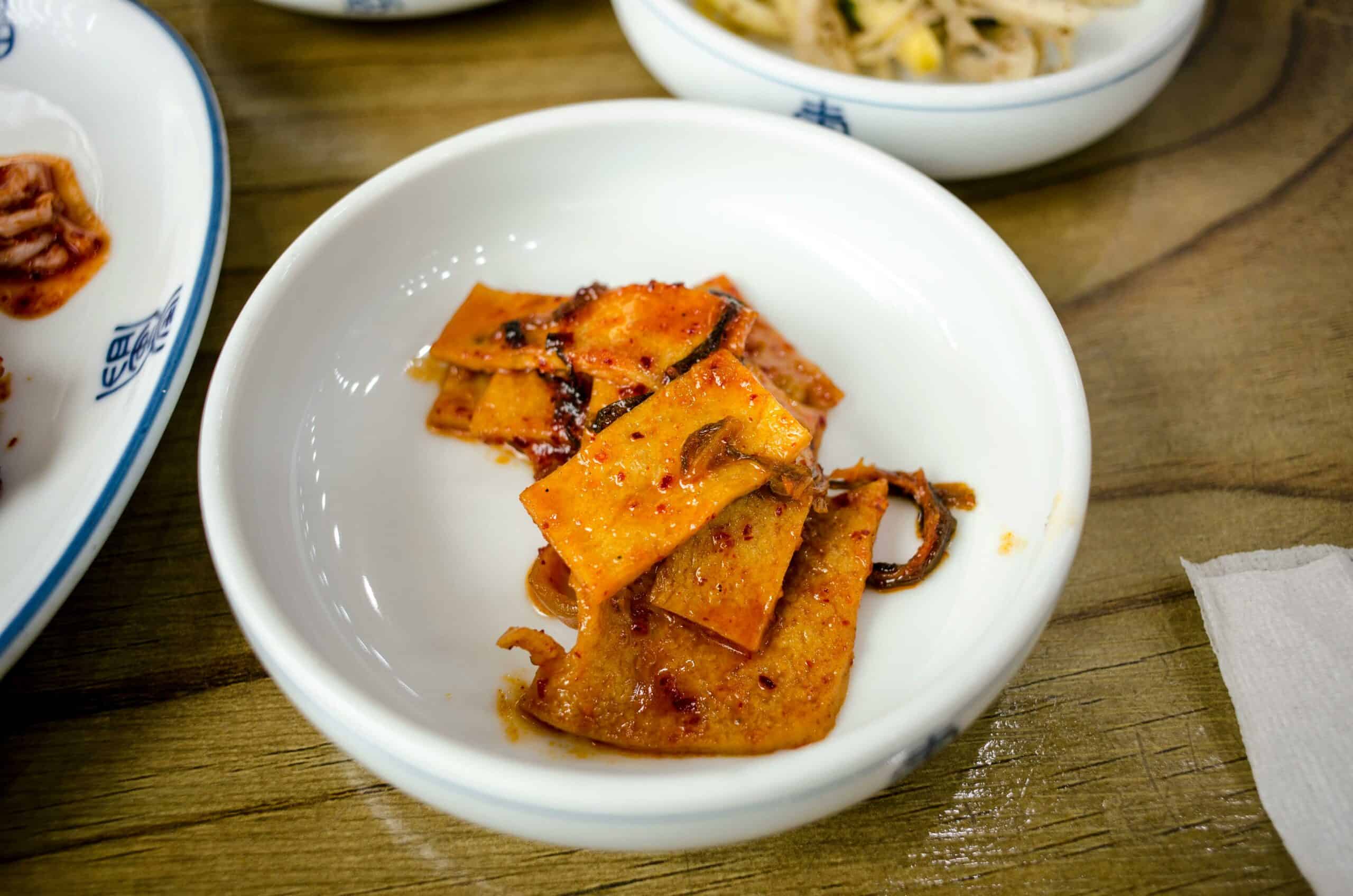
👨🍳 Culinary Uses
In Soups and Stews
Fish cakes are a common ingredient in various Korean soups and stews, where they absorb the flavors of the broth, enhancing the overall taste of the dish.
One popular dish featuring fish cakes is eomuk-tang, a clear soup typically seasoned with soy sauce, garlic, and green onions. Fish cakes are also integral to jjigae, a hearty stew that includes ingredients like tofu, kimchi, and vegetables.
These soups and stews, beloved for their comforting and warming qualities, are particularly favored as comfort food during the colder months.
As a Staple in Street Foods
In the bustling streets of Korea, fish cakes are a staple in many street food dishes. Often skewered on sticks, they are served in a hot broth known as odeng-guk, providing a warming and satisfying snack for passersby.
Another popular dish featuring fish cakes is tteokbokki, where they are stir-fried with rice cakes, gochujang (spicy red pepper paste), and other ingredients. This affordable and delicious dish is a hit among both locals and tourists.
The chewy texture of the fish cakes and the rich flavors of the sauce make street food an exciting culinary adventure for anyone exploring Korean cuisine.
Side Dishes and Banchan
Fish cakes also play a significant role in banchan, served alongside the main course in Korean meals. They are often stir-fried with vegetables and are a common inclusion in gimbap (Korean sushi rolls), where they are rolled with rice, seaweed, and other ingredients, adding flavor and texture to various dishes.
A favorite among the banchan is the sweet and savory stir-fried fish cake, usually made with soy sauce, sugar, and sesame oil. These side dishes add variety and taste to meals, making every bite interesting and flavorful.
When combined with other side dishes, they create a well-rounded and delightful dining experience, enhancing the overall enjoyment of Korean cuisine.
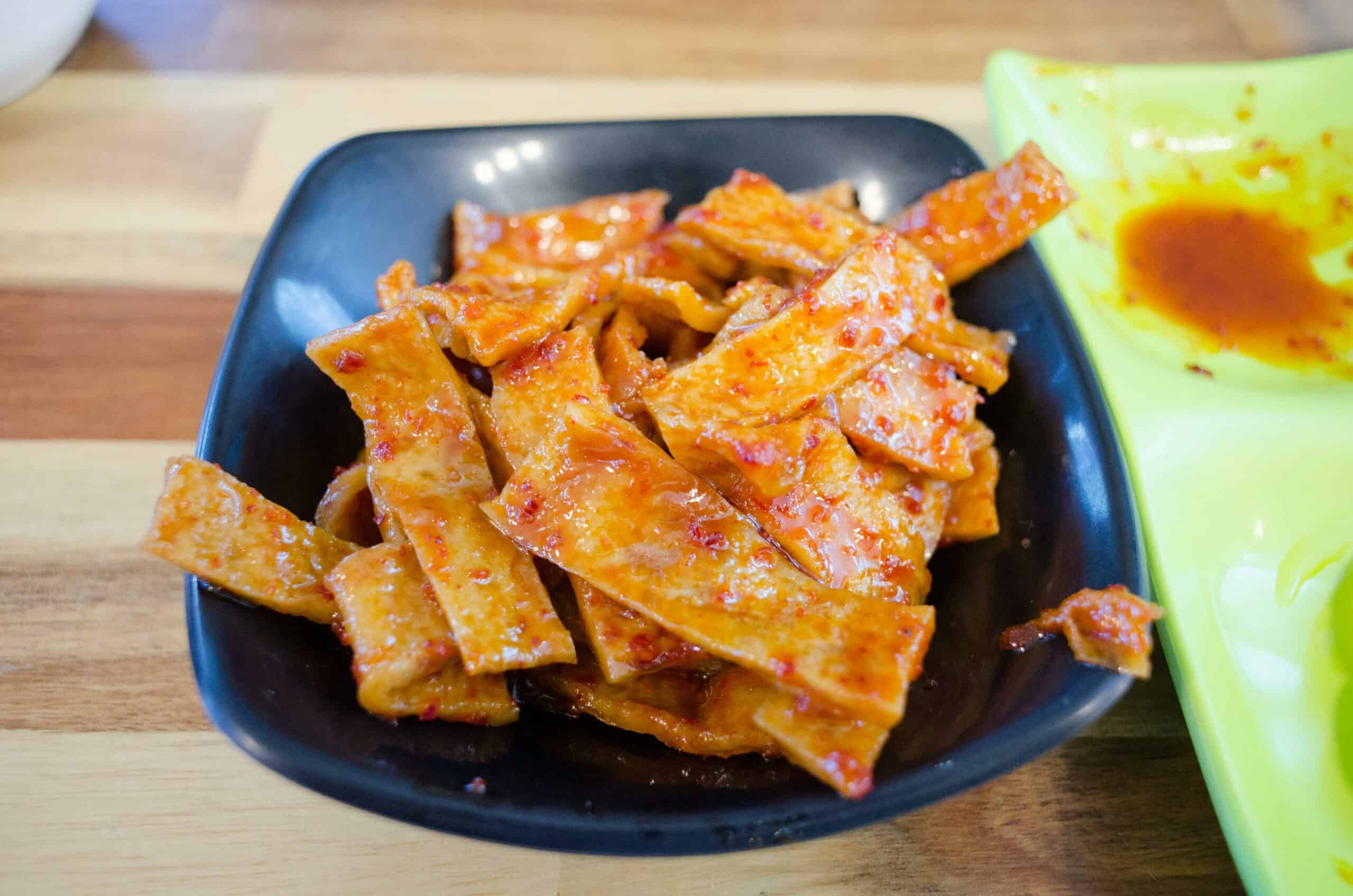
🍲Other Popular Recipes
Classic Korean Fish Cake Soup
Eomuk-guk is a comforting and simple soup often served as street food or a light meal in Korea. The main ingredients include sliced fish cakes, radish, and onions, submerged in a broth typically made from anchovy and kelp.
This combination creates a rich and savory base that enhances the flavors of the ingredients, making it a beloved choice among locals and visitors alike.
To prepare the soup, start by making the broth: boil anchovies and kelp together, removing them after about 10 minutes. Next, add radishes to the broth and cook until they become soft.
Finally, add the sliced fish cakes and green onions, allowing them to simmer together and absorb the savory flavors of the broth. Cook for another 5-7 minutes. The soup is often seasoned with salt, pepper, and soy sauce. It’s best enjoyed hot and garnished with chopped scallions or parsley.
Stir-Fried Eomuk Bokkeum
Eomuk bokkeum is a popular Korean side dish that seamlessly pairs with any meal. This dish features fish cakes, carrots, and bell peppers as the main ingredients. It's seasoned with soy sauce, sugar, and sesame oil, which blend to create a distinctively sweet and savory flavor profile.
To cook, heat a pan with oil over medium heat. Add sliced veggies and stir-fry until they start to soften. Next, toss the fish cakes and continue stirring until everything is cooked.
Mix in soy sauce, sugar, and sesame oil. Stir well to coat all the ingredients evenly. Finally, sprinkle with sesame seeds before serving for added texture and flavor.
🔪 Cooking Tips and Techniques
Selecting the Right Ingredients
Selecting the freshest ingredients is crucial for making delicious Korean fish cakes. The primary ingredient, fish, should ideally be a white variety like cod or pollock, known for its clean and mild flavor. Ensuring the freshness of the fish by purchasing from a reliable source is essential to the quality of the dish.
Veggies for this dish should be crisp and vibrant, with common choices including carrots, onions, and green peppers. Finely chopping them ensures even cooking and a seamless blend with the fish mixture, enhancing the overall texture and flavor.
Spices and seasonings like salt, sugar, and white pepper are essential for adding depth to the fish cake's flavor. Using high-quality spices can significantly enhance the authenticity of the taste.
A food processor proves invaluable in this preparation, as it finely mixes the fish and veggies into a smooth paste, ensuring a consistent texture throughout.
Preparation and Storage Tips
Proper preparation and storage are vital for keeping Korean fish cakes fresh and tasty. Begin by blending the fish and vegetables in a food processor until smooth, then refrigerate the mixture for at least an hour to help it firm up.
When shaping the fish cakes, coat your hands with oil to prevent sticking. Cook them immediately in a hot frying pan to ensure they retain their shape and achieve a nice, crispy exterior.
For storage, place the cooked fish cakes in an airtight container. They can be refrigerated for up to a week or frozen for about a month.
To prevent sticking, make sure to separate the layers with parchment paper. Reheat in a pan or oven to maintain their texture and flavor.
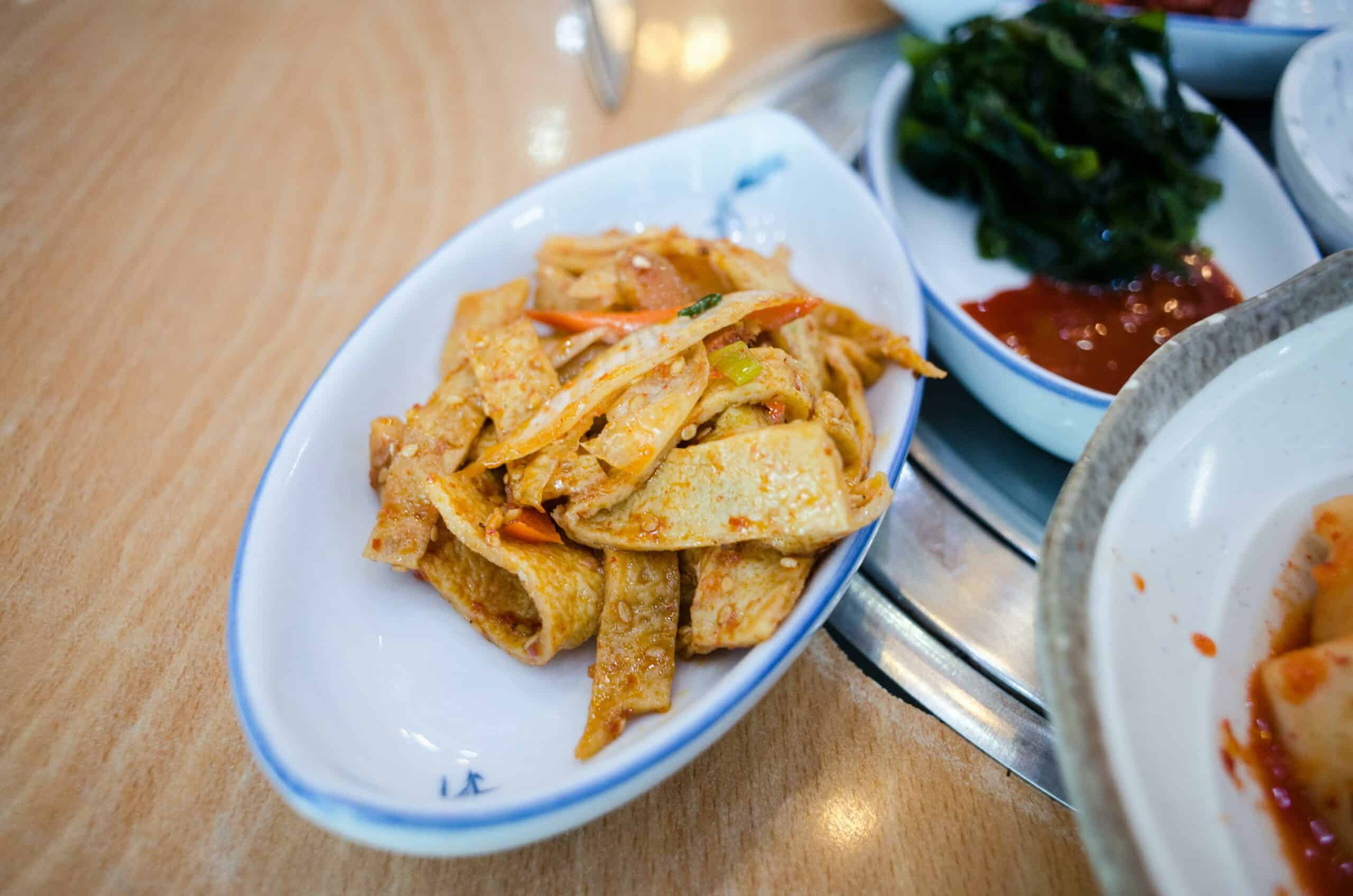
🩺 Nutritional Information
Calories and Macronutrients
Korean fish cakes are a relatively low-calorie food, with a typical serving size containing about 100-150 calories. This moderate calorie content makes them an excellent option for a light snack or a side dish in a balanced meal.
Carbohydrates: Fish cakes usually contain 10-15 grams of carbohydrates per serving. This mainly comes from fillers like potato starch and wheat flour.
Protein: With around 7-10 grams of protein per serving, fish cakes can help meet daily protein needs, especially for those looking to boost their protein intake without consuming meat.
Fat: The fat content in fish cakes is typically low, around 2-5 grams. The type of fat present is usually from fish, and minimal oil is used in cooking.
Sodium: One thing to remember is the sodium content, which can be relatively high. A serving might contain up to 500-600 milligrams of sodium, about 20-25% of the recommended intake.
Vitamins and Minerals
In addition to macronutrients, Korean fish cakes pack several important vitamins and minerals.
Vitamin A: Some fish cakes provide small amounts of vitamin A, which is crucial for eye health and immune function.
Vitamin C: Depending on the ingredients used, fish cakes might contain traces of vitamin C, which helps repair tissues and enzymatically produce certain neurotransmitters.
Iron: Fish cakes can be a good source of iron, with each serving providing about 1-2 milligrams. Iron is essential for the production of hemoglobin and the prevention of anemia.
Potassium: Fish cakes also contain moderate levels of potassium, though not in significant amounts. Potassium is vital for maintaining proper heart and muscle function.
🏪 Selecting High-Quality Products
When choosing Korean fish cakes, opt for fresh products that list fish or fish surimi as the main ingredient, followed by starch, egg, and flavorings. A good balance of these ingredients indicates a high-quality fish cake.
Check the packaging for the place of origin, as fish cakes from Busan are known for their superior taste and quality. Also, check the expiration date to ensure the product's freshness. When selecting fish cakes, opt for those not overly processed and avoid those with a long list of additives and preservatives.
Taste and texture are also crucial. Good fish cakes should have a mild, savory flavor and a firm yet slightly springy texture. Trying different brands might help you find the one that suits your taste best.
❓ Frequently Asked Questions
Korean fish cakes are typically made using ground white fish, shrimp, and a mix of potato starch, wheat flour, sugar, and minced vegetables. The mixture is then shaped into various forms and cooked.
You can buy Korean fish cakes at Asian grocery stores or supermarkets that have an Asian food section. They are often found in the frozen or refrigerated foods section. Online retailers also offer them.
Korean fish cake soup, often called odeng guk, features fish cakes simmered in a clear broth with radish, green onions, and seasonings. It’s a popular street food known for its light and savory flavor.
Eomuk Bokkeum is a stir-fried dish made with Korean fish cakes, onions, and bell peppers. Thinly slice the fish cakes and vegetables, then stir-fry them with soy sauce, garlic, and a bit of sugar.
Yes, instant Korean fish cake soup is available at many Asian grocery stores and online. These instant versions often come with dried fish cakes and a flavor packet. Just add hot water for a quick meal.
Eomuk and odeng refer specifically to Korean fish cakes. The term "fish cakes" can be broader and include various styles from different cuisines. Korean fish cakes often include unique ingredients like minced vegetables and have a distinct texture.

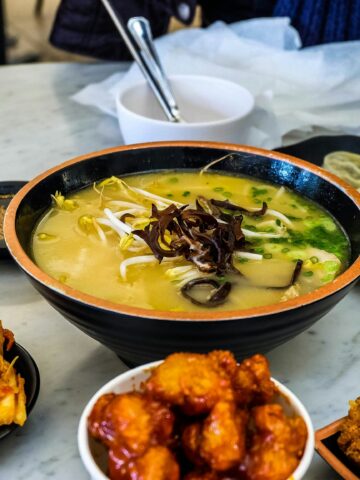
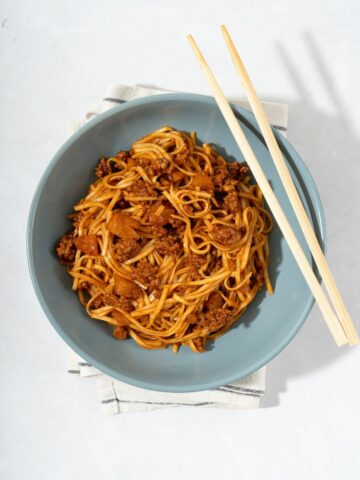


Comments
No Comments